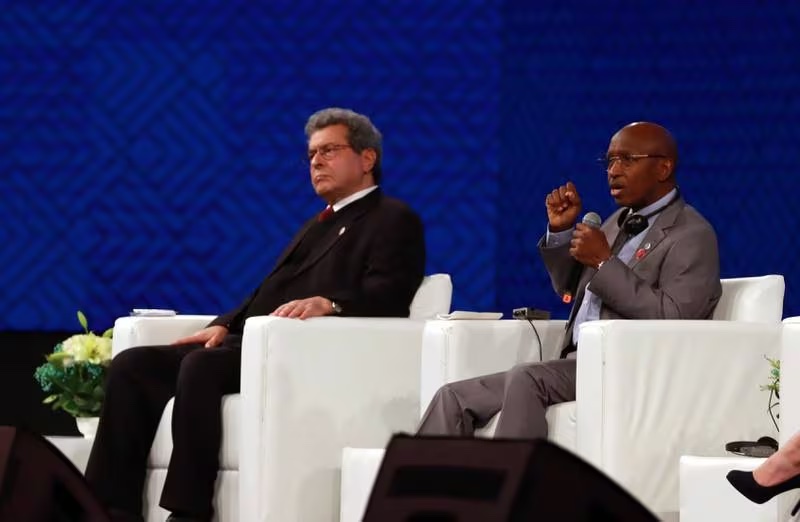NEWS
Libya needs more international partners to boost oil and gas production.

Libya, an OPEC producer, needs more international partners to boost production oil and gas over the next few years, said executives and managers from the energy sector.
The National Oil Corporation (NOC), Libya's national oil company, is planning toincrease its production to two million barrels per day over the next three to five years, compared with around 1.2 million barrels per day today.
The country, which has the largest crude reserves in Africa, is also preparing to launch bids for exploration zones by the end of 2024.
"We still have fields to explore, especially those in the Mediterranean and central regions, where new oil and gas fields will be discovered," said Mohamed Oun, Libya's Oil Minister, at the Libyan Energy and Economy Summit on Saturday.
Citing OPEC data, Mr. Oun said that demand for fossil fuels would continue to grow over the coming decades.
The oil producers' group expects crude demand to reach 116 million b/d by 2045, compared with 102 million b/d today.
Libya has become a major supplier of natural gas to Europe following the reduction in Russian exports following the invasion of Ukraine.
Luca Vignati, head of upstream at Eni, said he hoped Libya would avoid sharing the fate of many countries that stopped exploring for oil and gas as part of energy transition efforts, only to end up importing fossil fuels.
"That's the first red line we want Libya never to cross, and we're trying to make investments (...) to avoid that," he said.
Mr. Vignati also urged the government to make Libya "more open" to potential suppliers and partners.
Last year, Eni, BP and Algerian energy company Sonatrach announced the resumption of operations in the North African country after a 10-year absence.
In January 2023, Eni and NOC signed an $8 billion gas production agreement, which could result in production of up to 760 million cubic feet of gas.
However, the agreement was opposed by several political factions as well as the Ministry of Oil and Gas.
Spain's Repsol is due to start exploratory drilling in Libya's Murzuq Basin in April 2024.
"We're bringing our people back to start exploring again... Libya is one of the first places in the world where we bet to continue exploration," said Francisco Gea, Repsol's general manager of exploration and production.
"Libya has a great responsibility to continue providing resources for the future," said Gea.
The country has known little peace since the 2011 uprising against NATO-backed Muammar Gaddafi, and split in 2014 between warring factions in the east and west. Major fighting ceased after a ceasefire in 2020.
Last week, the NOC declared force majeure at the Sharara oil field, the country's largest, after it was shut down by protesters.
This shutdown led to the suspension of crude oil supplies from the field to the Zawiya terminal.
The oil field in southern Libya can produce up to 300,000 b/d, which represents around a quarter of the country's total production of 1.2 million b/d.
The Libyan government is working with the NOC to negotiate with the protesters and resume production, Mr. Oun told reporters, without revealing a timetable.
Meanwhile, Abdul Hamid Dbeibeh, Prime Minister of the Libyan government based in Tripoli, said in his opening address to the forum that the government had sought to create programs to boost the country's economy.
He said the government's support was a "fundamental and crucial step" as it implemented a comprehensive plan for the oil and gas sector, aimed at solving all the problems and removing the obstacles facing the industry.
The hydrocarbon sector accounts for around 95% of Libyan exports and generates almost 95% of government revenue.
The country's real gross domestic product is set to grow by 12.5% in 2023, after contracting by 9.6% in 2022, according to the International Monetary Fund.
-

 ANALYSIS11 month ago
ANALYSIS11 month agoThe 3 African countries richest in natural resources
-

 FOCUS ONA1 an ago
FOCUS ONA1 an agoThe 10 largest oil refineries in Africa
-

 NEWS8 month ago
NEWS8 month agoTop 10 des pays africains producteur de l’or : Mali 2-eme, Burkina Faso 3-eme
-

 NEWS2 ans ago
NEWS2 ans agoRanking of oil producers: Here are the Top 10 African countries.
-

 FOCUS ONA8 month ago
FOCUS ONA8 month agoTop 10 oil producers in Africa in 2023
-

 NEWS2 ans ago
NEWS2 ans agoTop 20 oil producing countries in 2022
-

 NEWS5 month ago
NEWS5 month agoAfrica's 10 largest natural gas production fields.
-

 NEWS7 month ago
NEWS7 month agoIvory Coast: Eni to deploy a cylindrical FPSO and a converted FSO on the Baleine oil field













